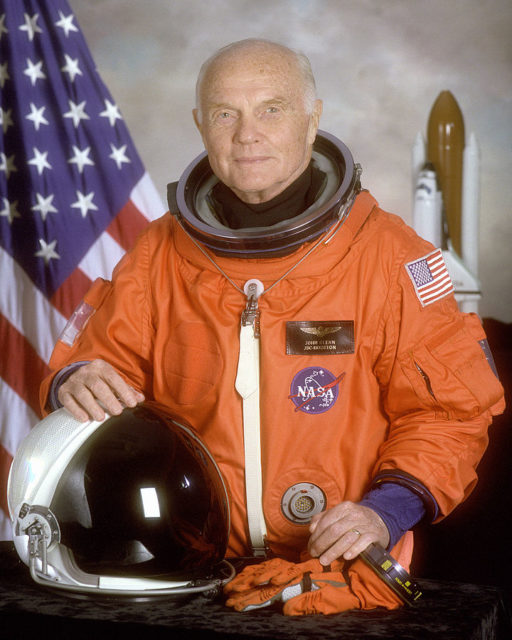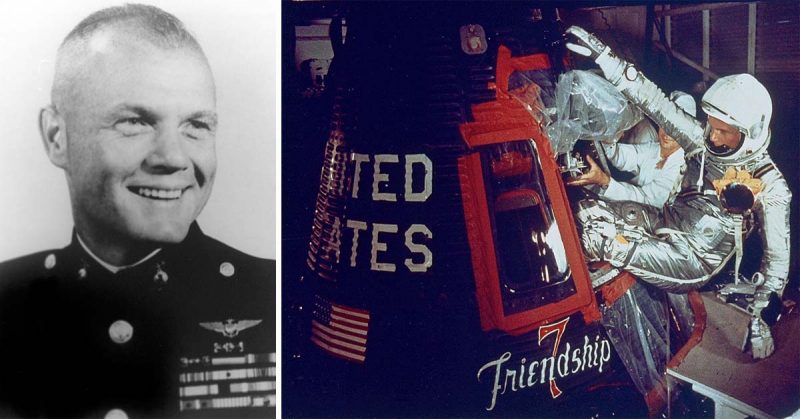Astronaut John Glenn seems as inspirational now as he was in 1962 when he became the first American to orbit the Earth three times over four hours, 55 minutes and 23 seconds.
Since his death on December 8 at age 95, an unknown number of fans have stopped by to visit a display of his artifacts on the Ohio State University campus. Supporters have started a fundraising campaign for an astronomy and observatory park in Glenn’s name. Work has started on a seven-foot statue in his likeness.
He is known as a former military test pilot and U.S. Senator, but it was the history–making Mercury mission on February 20, 1962, that cemented his reputation.

Archivist Jeffrey Thomas at Ohio State, who curated the Glenn display on exhibit until March, said the event was so passionately anticipated and monitored by the public that it made him an instant hero.
He said the world knew debris from a burning heat shield was passing by Glenn’s window as he entered the atmosphere and into radio silence.
Glenn survived entry and went on to live a full life honored in the display. Among the items on display is his first pilot’s license, baby book, anti-aircraft shell fragments recovered from a jet fighter-bomber he flew during the Korean War, patches, jackets, headgear, and medals.
The walls of artist Zenos Frudakis’ studio in eastern Pennsylvania are also bedecked with pictures of Glenn, as the sculptor makes clay models for an eventual life-size sculpture.
Frudakis has connected with Adam Sackowitz, a New York graduate student pursuing a sculpture, portrait, and other physical remembrances of Glenn. The first application seeking a space on the Historic Register for Glenn’s birthplace was disallowed. The National Park Service suggested as a better choice, Glenn’s childhood home in New Concord.
The Ohio History Connection, the state history office, has as yet not received the paperwork on the boyhood home, said spokeswoman Emmy Beach.
Glenn’s legacy is also energizing members of the non–profit Friends of Hocking Hills State Park, The Intelligencer reported.
The group has received half of the $1.6 million budget to construct an observatory and astronomy location approximately 45 miles southeast of Columbus. Low light pollution in the region allows a clear view of the night sky, the group said.
